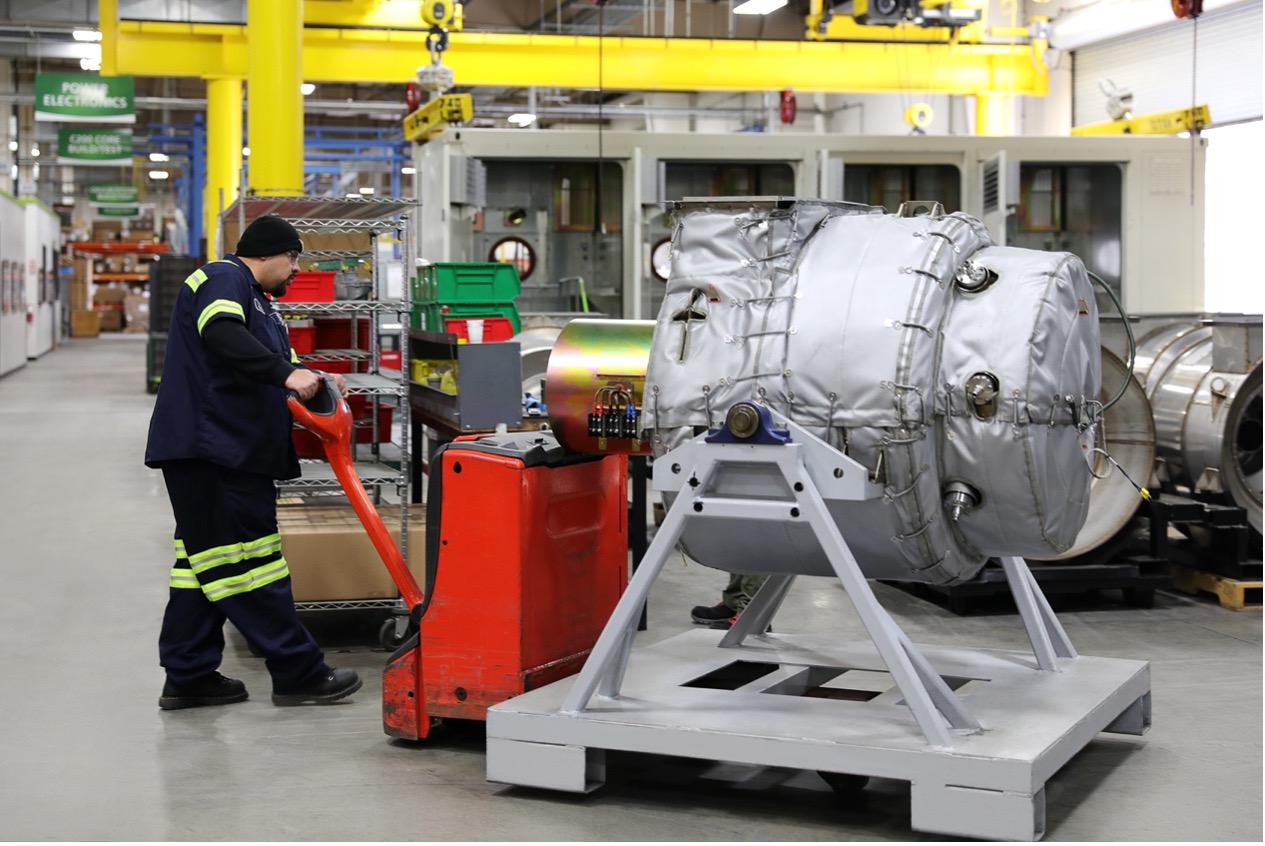A Closer Look at Capstone’s Manufacturing Process
Located in the heart of Los Angeles’ San Fernando Valley, Capstone’s 70,000-square-foot manufacturing facility is where everything comes together: technical know-how and testing, precision and performance. We take great pride in all the hard work that happens here and thought we’d provide a small window into the manufacturing process that marks the start of the journey from components to completion.

COMPONENTS AND QUALITY CONTROL
A Capstone engine’s single moving part is built from component parts that are made of various super-alloy castings and forgings. In the first phase, all components are precision-machined to tolerances in the ten-thousands. To help ensure there are no material defects or dimensions that are out of tolerance, each component undergoes a thorough quality inspection. Once components are inspected and approved, they are routed to the balancing room.
Because our engines can operate at speeds of 96,000 rpm, it’s critical to minimize the total amount of rotor displacement. To ensure the dynamic components are balanced, our technicians measure each component’s imbalance on calibrated machines, and then remove any excess material until the component reaches its balance equilibrium.
After all components are balanced, they are safely built into our microturbine engine module. Once the microturbine engine module is integrated into its system, it goes through a 3-hour acceptance test, during which we closely measure vibration and other outputs. Since the engine uses only a cushion of air in operation, the balance condition remains constant throughout the life of the product.
SYSTEM MODIFICATIONS AND ADAPTATIONS
One of most significant benefits a Capstone system offers is the ability to be configured for various fuel and environmental needs. For example, the requirements for a natural gas-fueled combined heat and power solution in a hospital in Italy are different than for an African village’s butane-fueled system application, but our base system can be modified to accommodate either site and a range of options in-between.
At any given time, our production team can be tasked with building one of 750 different possible configurations. Fortunately, our system design is robust enough that these modifications only involve the substitution of a few different components. Things like injectors that ensure proper combustion. Or fuel valves so they are capable of handling different fuel types. Or the addition or subtraction of electrical filters to respond to different interconnection requirements.
Of course, adjusting to these variables creates challenges since a manufacturing environment needs to be able to plan for and adapt to each possible demand-need. At Capstone, we’ve designed our manufacturing processes to address the risks of product variation while keeping our inventory levels as low as possible. The result is a production process that delivers to the customer the product they need with the shortest possible lead time while still maintaining world-class quality.
On the manufacturing floor, we achieve this by applying concepts of Six Sigma and lean manufacturing. Our shop is organized into standardized work cells that are capable of adapting to customer demand changes with minimal to no interruption. At the same time, an effective system of color coding and inventory tracking helps prevent errors, and there are several in-process quality checks in place as systems move from station to station.
It’s a system that works exceptionally well. Our team is capable of manufacturing a C1000S (1 MW) system with just three days’ lead time, and our C65 (65 kW) systems can be manufactured within a matter of hours.
OUR PEOPLE MAKE IT WORK
When it comes to producing a quality product, though, our people will always be our most important asset. Capstone’s technicians come from all backgrounds and industries, both military and civilian, and we value the unique perspective each brings to our organization.
Our manufacturing team operates under core values of safety, teamwork, accountability, innovation and excellence. Our team is small, so we focus heavily on cross-training, ensuring that every technician can perform several different job tasks. We find this to be a valuable approach—not only does it keep our technicians from becoming fatigued through repetition, it meets their intrinsic needs for continuous growth and challenge.
To further keep our technicians engaged, they’re encouraged and incentivized to achieve increased levels of training, and we ensure the environment remains open and flexible for them. We put a great deal of trust in our team for the ultimate quality of our product, and empower them to take action when needed. For example, any employee has the ability to stop the production line if a quality issue is discovered.
SATISFYING CUSTOMERS, MEETING A GLOBAL NEED
Continuous improvement with a focus on meeting customer needs will always be our primary manufacturing goal. What makes it even more rewarding is knowing that our products are also making a positive difference all around the world.
Learn more about Capstone’s manufacturing capabilities, please visit https://www.youtube.com/playlist?list=PLhuA58w83Z-E_Aegqpdc97IeV1l2vnYss






